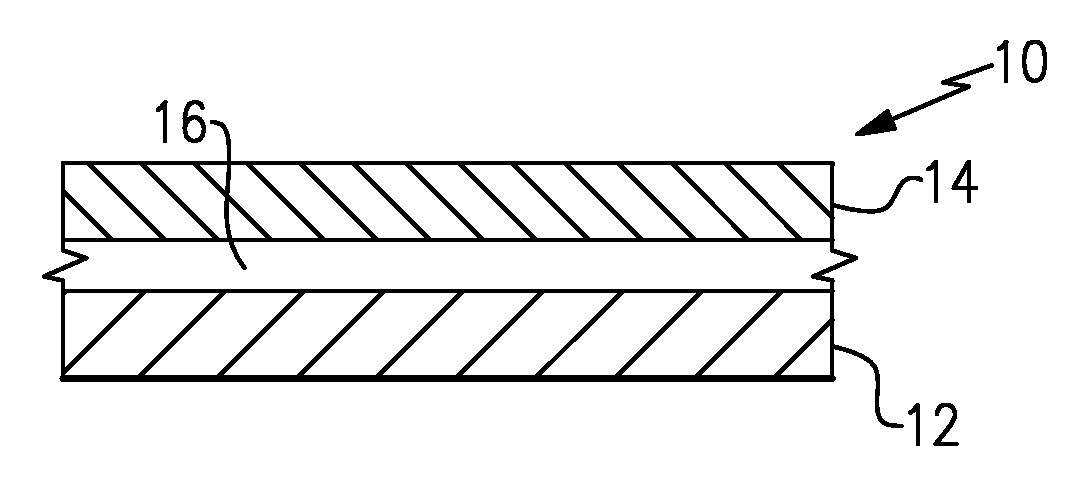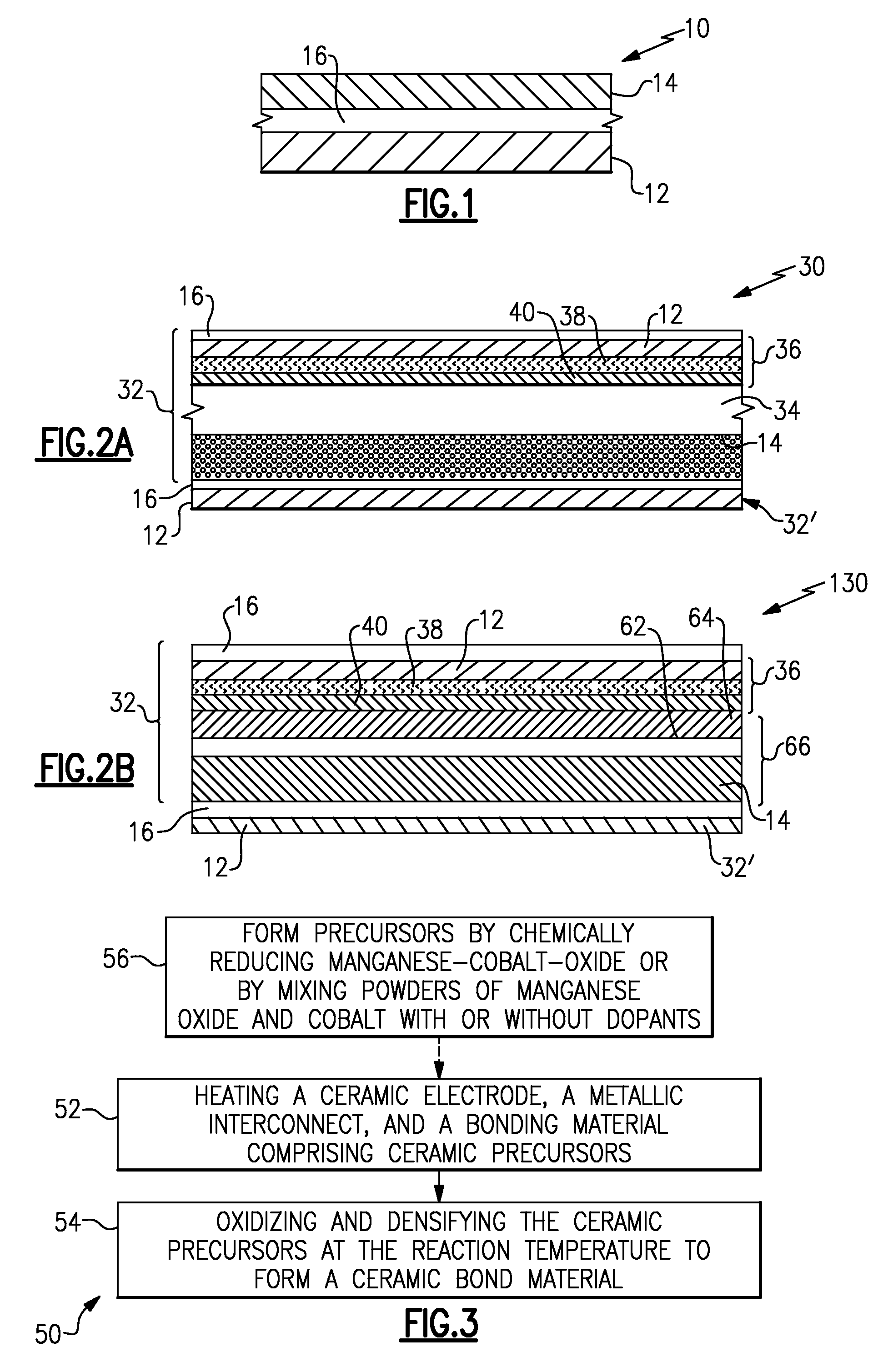Method and device using a ceramic bond material for bonding metallic interconnect to ceramic electrode
a technology of ceramic electrodes and bonding materials, which is applied in the direction of electrochemical generators, cell components, instruments, etc., can solve the problems of reducing performance, and affecting the performance of devices
- Summary
- Abstract
- Description
- Claims
- Application Information
AI Technical Summary
Benefits of technology
Problems solved by technology
Method used
Image
Examples
Embodiment Construction
[0011]FIG. 1 schematically illustrates selected portions of an example device 10 (e.g., electrochemical device). As an example, the device 10 may be within a fuel cell assembly, oxygen sensor, solid oxide hydrogen generator, solid oxide oxygen generator, or the like.
[0012]The device 10 includes a ceramic electrode 12, a metallic interconnect 14, and a ceramic bond material 16 that bonds the ceramic electrode 12 and the metallic interconnect 14 together. In this case, the ceramic bond material 16 is located between the ceramic electrode 12 and the metallic interconnect 14 and is in direct contact with each. However, using additional layers between the ceramic electrode 12 and / or the metallic interconnect 14 and the ceramic bond material 16 is also contemplated.
[0013]As may be appreciated, the ceramic electrode 12 may be any type of electrode through which an electric current flows or is intended to flow. For instance, the ceramic electrode 12 is the cathode or air electrode in a soli...
PUM
| Property | Measurement | Unit |
|---|---|---|
| reaction temperature | aaaaa | aaaaa |
| temperature | aaaaa | aaaaa |
| temperature | aaaaa | aaaaa |
Abstract
Description
Claims
Application Information
 Login to View More
Login to View More - R&D
- Intellectual Property
- Life Sciences
- Materials
- Tech Scout
- Unparalleled Data Quality
- Higher Quality Content
- 60% Fewer Hallucinations
Browse by: Latest US Patents, China's latest patents, Technical Efficacy Thesaurus, Application Domain, Technology Topic, Popular Technical Reports.
© 2025 PatSnap. All rights reserved.Legal|Privacy policy|Modern Slavery Act Transparency Statement|Sitemap|About US| Contact US: help@patsnap.com



